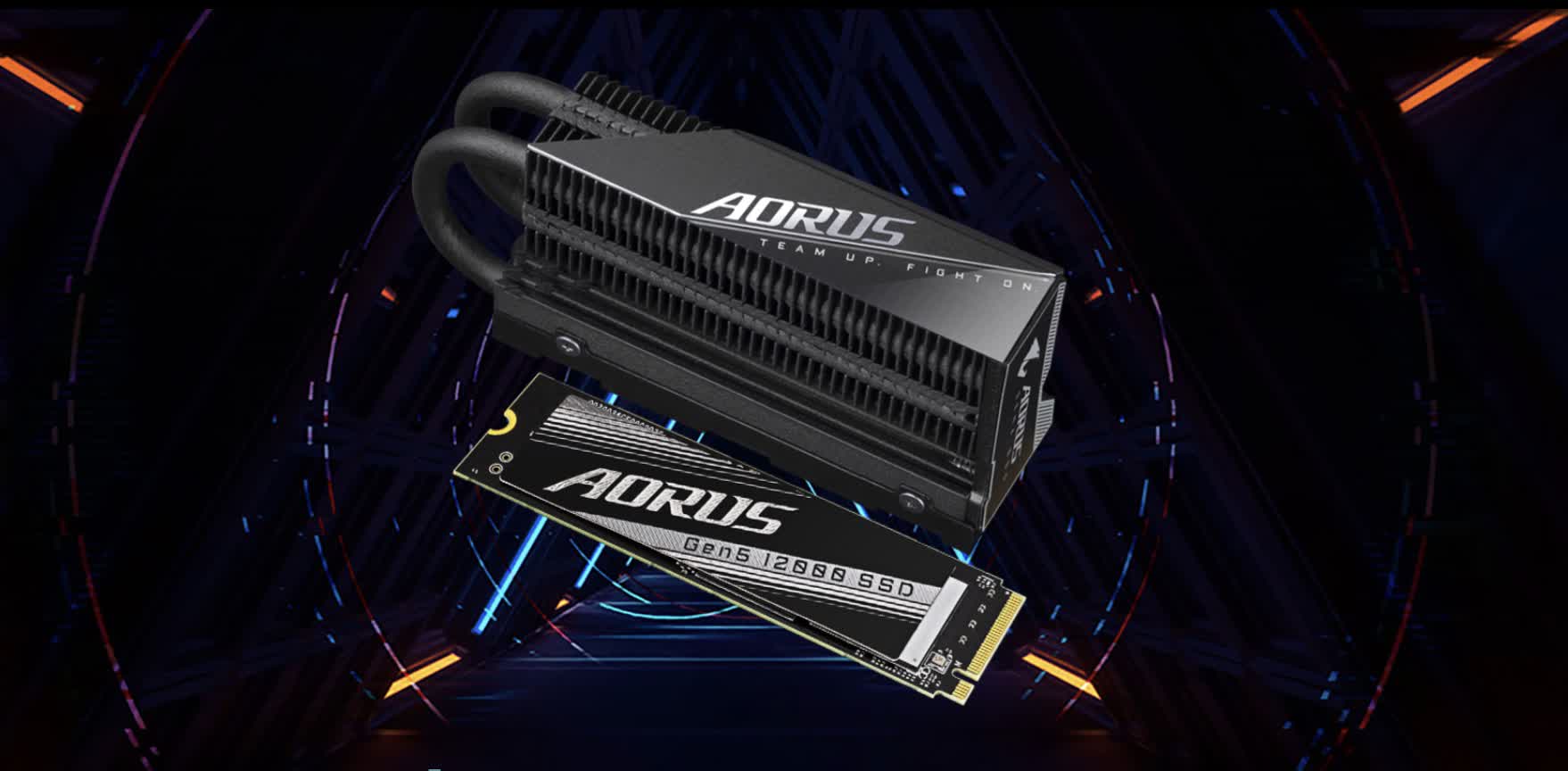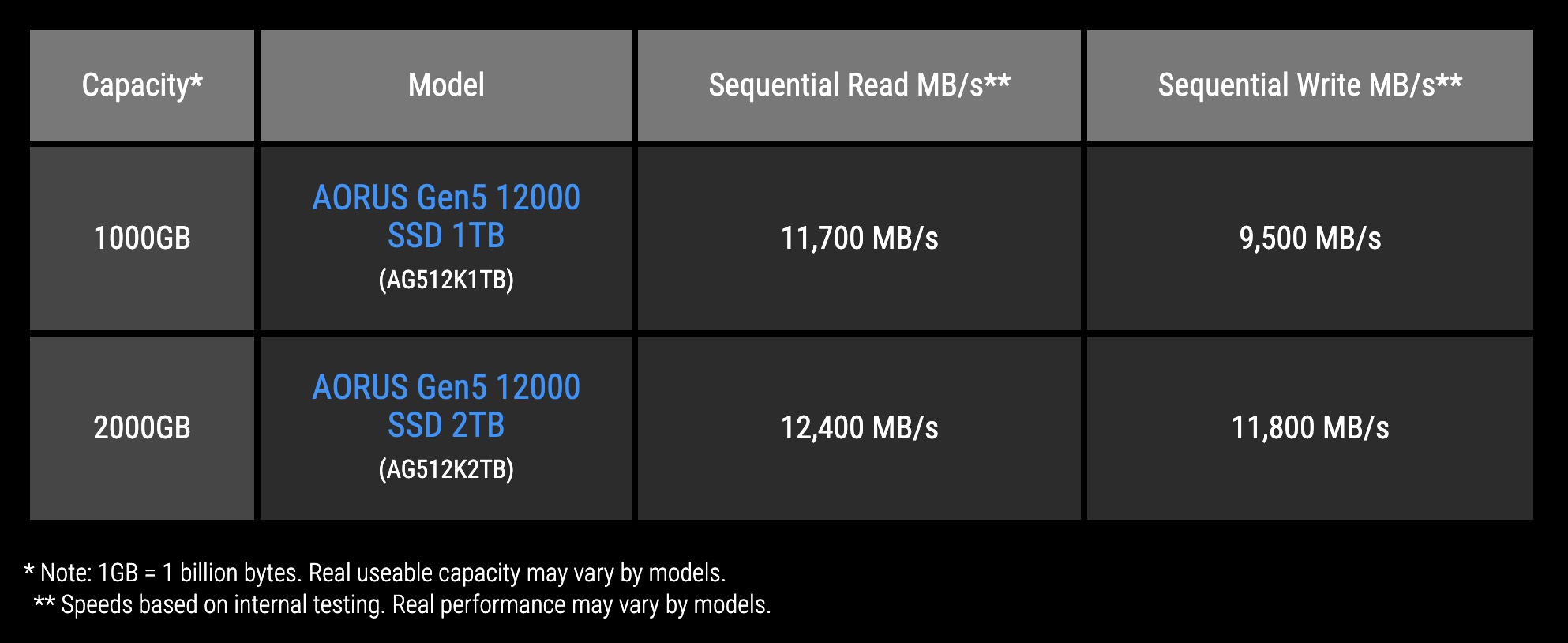The big picture: Solid-state drives that employ the PCIe 5.0 standard are still relatively new, often characterized by high prices and massive heatsinks. However, Gigabyte's latest product showcases notable advancements and indicates potential improvements based on the SSD controller.

Gigabyte has released a new iteration of its Aorus Gen5 PCIe 5.0 NVMe SSD. The new drive arrives just months after the company's initial PCIe 5.0 drive, with the latest model boasting approximately 20 percent faster read and write speeds.
The 2TB Aorus Gen5 12000, as its name suggests, supports sequential read speeds of 12.4 GB/s and write speeds of 11.8 GB/s. Even the 1TB variant, which offers 11.7 GB/s read and 9.5 GB/s write speeds, surpasses the 2TB Aorus Gen5 10000 that Gigabyte launched in April.
While these performance figures are notable, other specifications have remained consistent. The preceding model's warranty – either five years or 1,400 terabytes written – is still in place, as is the use of Micron's 3D TLC NAND flash. Gigabyte has yet to disclose pricing or availability for the new drive. However, the original 10000 model is currently priced at $290, a reduction from its original MSRP of $340.
The Gen5 12000's performance appears to fully utilize the widely-used Phison PS5026-E26 8-channel controller's 12GB/s read speed, paralleling the Crucial T700's output and outstripping most competing PCIe 5.0 drives. However, Tom's Hardware has reported that the E26 can achieve 14GB/s, suggesting that Gigabyte might have additional room for enhancement.
While PCIe 5.0 SSDs are still somewhat of a rarity, models that can hit 14GB/s are even scarcer. A notable exception is Adata's forthcoming NeonStorm, which will employ Silicon Motion's NVMe 2.0-compliant SM2508 controller and be available in capacities of up to 8TB. As current benchmarks from the Crucial T700 demonstrate, all PCIe 5.0 drives need heatsinks nearly the size of the primary unit to prevent significant performance drops. The NeonStorm, however, takes SSD cooling a step further by incorporating dual fans and liquid cooling.
The size of these heatsinks inherently limits the motherboards that can fully support PCIe 5.0 drives. In the context of the Aorus Gen5, Gigabyte prudently provided a list of incompatible motherboards. As expected, mini-ITX systems don't make the cut. Other non-compatible motherboards encompass Micro-ATX B550, B560, B660, B790, and B760 variants.
Since those tend to be budget boards, owners are unlikely to be PCIe 5.0 early adopters. It remains unclear how or when the technology will become mature enough to accommodate smaller and cheaper systems. One sign to watch for might be when the two most popular SSD brands, Samsung and Western Digital, migrate to the new standard.
https://www.techspot.com/news/99976-gigabyte-aorus-gen5-ssd-gets-upgraded-12000-mbs.html
